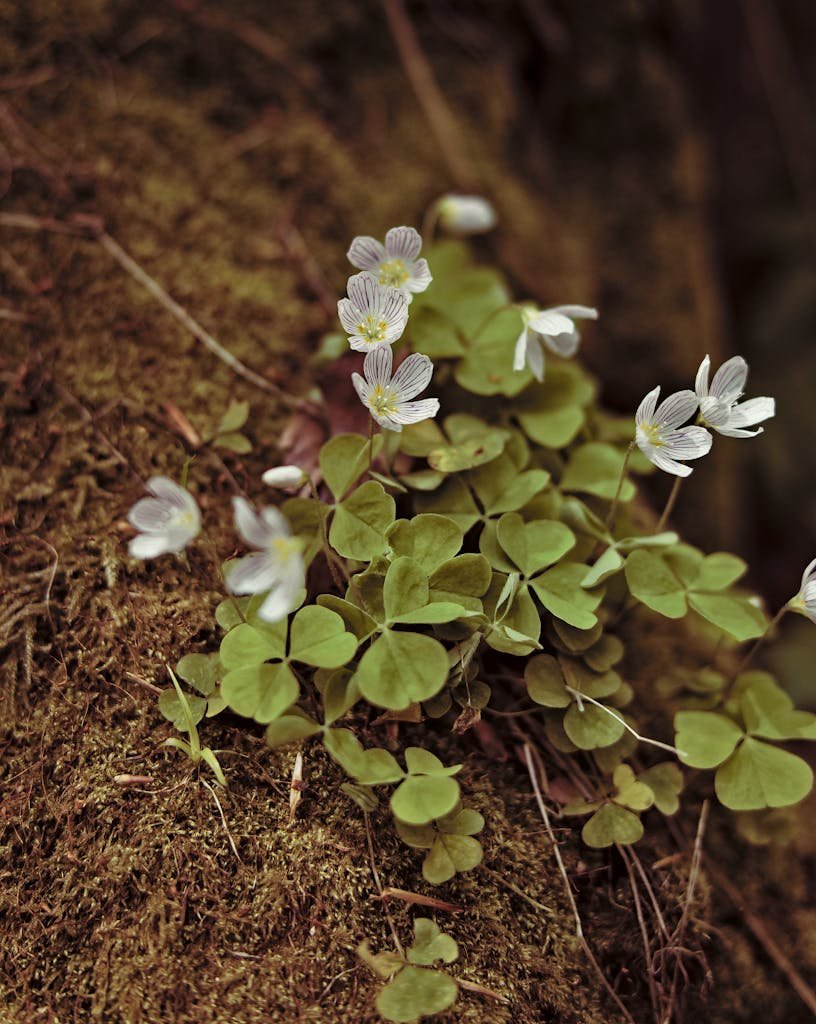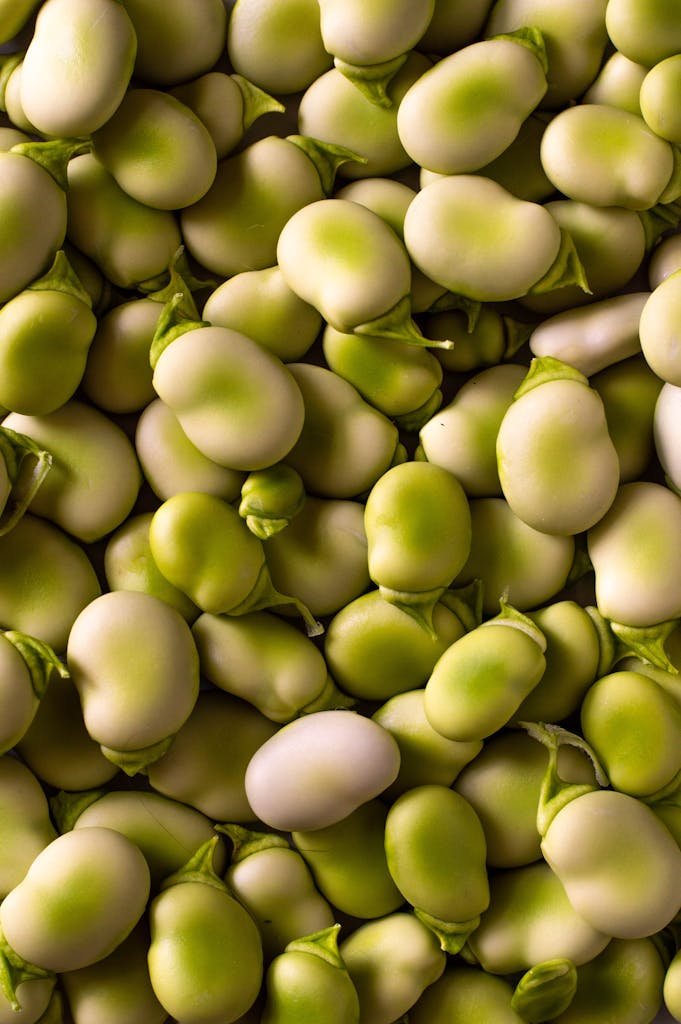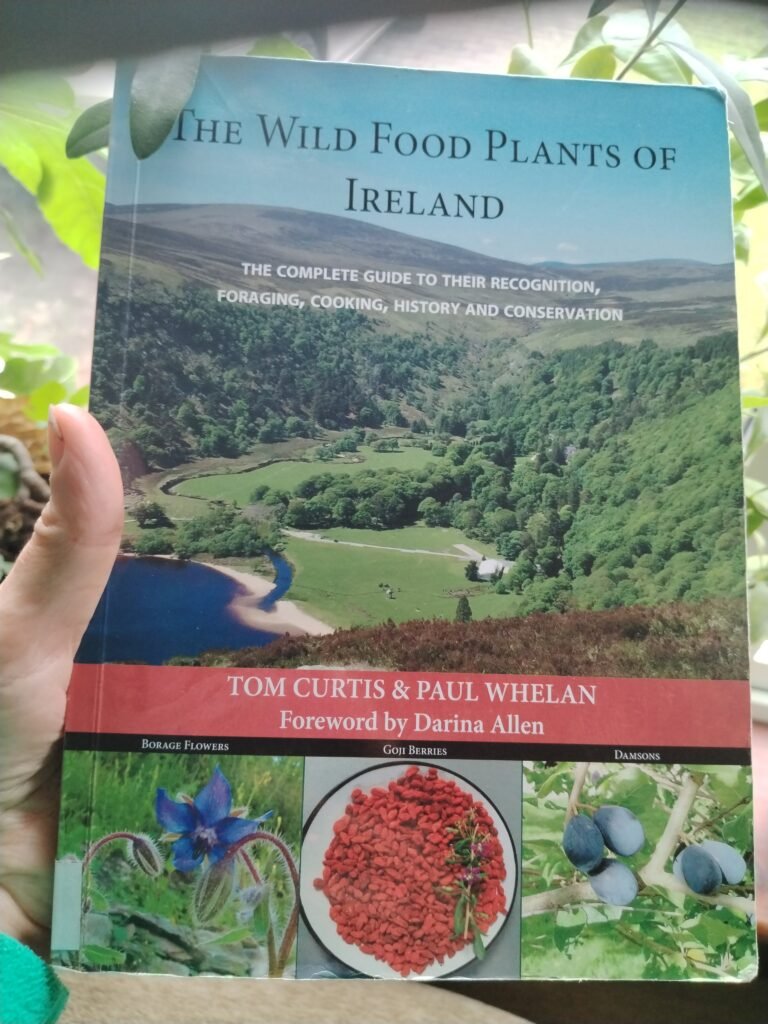


Spring is here, and that means it’s time for Broad Bean and Spring Herb Fritters. These little crispy bites are full of fresh green flavor, and they’re easier to make than they look. Even better, they’re packed with plants that grow right around us—from the garden to the hedgerow.
Broad beans are a spring garden favorite. They’re one of the first things to pop up, and they’re full of protein and goodness. But the real fun begins when you add wild herbs. This recipe calls for wood sorrel and wild garlic, two tasty plants you can forage on a weekend walk. They’re easy to spot once you know what to look for, and they give your fritters a bright, lemony kick and a hint of garlicky charm.
I love recipes that make the most of what’s already growing—especially ones that invite us outside. Foraging can feel like magic: one minute you’re walking down a quiet lane, the next you’ve found dinner growing at your feet. With a basket in one hand and a few tips on what to pick, even beginners can join in.
So whether you grow your own broad beans or grab them at the shop, these fritters are a great way to welcome spring to your plate. They’re golden, crispy, and full of fresh, foraged joy. Let’s dig in, gather some wild greens, and make something simple and lovely together.
Broad Beans – Growing, Buying & Cooking Tips
How to Grow Broad Beans
Broad beans (also known as fava beans) are one of those garden heroes that reward you handsomely for very little fuss. They’re ideal for beginners—hardy, easy-going, and generous come harvest time.
When to Sow in Ireland (Zone 8-9):
In most parts of Ireland, you can sow broad beans twice a year. For the earliest harvest, sow in October or November—yes, really! They’re surprisingly frost-hardy, especially varieties like ‘Aquadulce Claudia’, which is the go-to for overwintering. If you missed the autumn window, don’t worry—February to March is your spring sowing slot. A cloche or fleece cover can help early seedlings along if frost lingers.
Popular Varieties to Try:
- ‘Aquadulce Claudia’ – the best for autumn sowing and very cold tolerant.
- ‘The Sutton’ – a dwarf variety, great for containers or exposed sites.
- ‘Crimson Flowered’ – beautiful red flowers, a heritage variety with charm.
- ‘Stereo’ – smaller pods, but sweet flavour and tender beans.
Soil & Sun Requirements:
These beans thrive in well-drained, fertile soil with good structure. They don’t love heavy, soggy ground, so if your soil is sticky, work in some compost or well-rotted manure beforehand. A sunny spot is best, but they’ll cope with light shade too. Adding lime can help if your soil is on the acidic side—they prefer a neutral to slightly alkaline pH.
Top Tips for Success:
- Sow seeds 5cm deep and 20cm apart, in rows 40cm apart.
- Pinch out the top tips once the lower pods form—this helps reduce blackfly.
- Support taller varieties with twine and canes if they’re getting leggy.
By early summer, you’ll be filling your basket with fat green pods—perfect for fritters, salads, or just munching fresh from the garden.
Where to Buy Broad Beans
No garden? No problem. Broad beans pop up at farmers markets in spring and early summer. But if you’re craving them off-season, check the freezer aisle—frozen broad beans are picked at their best and still full of flavour. They’re perfect for quick meals and make this recipe even easier.
Nutritional Benefits of Broad Beans
These beans aren’t just pretty—they’re packed with good stuff too. Full of plant protein, fibre, and essential nutrients like folate, iron, and B1, broad beans are a brilliant pick for plant-based and gut-friendly meals. Just a handful can help keep you full, nourished, and energised.
How to Cook Broad Beans (Double-Shelling Tip!)
Here’s the secret to making them taste their best: double-shelling. First, boil them for a couple of minutes, then plunge them into cold water. Once cooled, gently squeeze each bean from its pale outer skin. What you’re left with is bright green, buttery, and sweet—perfect for pairing with lemon and fresh herbs. It’s a bit of a labour of love, but worth every minute.

Wood Sorrel (Oxalis acetosella)
Wood sorrel is one of those little wild plants that feels like a secret treat from the forest. With its fresh lemony zing, it’s perfect for adding brightness to your spring fritters.
How to Identify It
First, look for soft, heart-shaped leaves that look a bit like clover. These usually grow in shady spots—woodlands, mossy banks, or damp grassy places. You’ll sometimes see small white or pale pink flowers tucked in among the leaves. But the real giveaway? That zesty, lemony tang when you nibble a leaf. It’s a flavour you won’t forget.
Watch Out for Lookalikes
Wood sorrel is sometimes confused with regular clover. Luckily, clover isn’t dangerous, but it also doesn’t have that zingy citrus taste. So if it doesn’t taste lemony, it’s probably not wood sorrel.
How to Use in Cooking
Use wood sorrel fresh—it wilts fast when heated. Try scattering a few chopped leaves over your fritters just before serving. You can also stir a handful into yogurt or fold it gently into your batter for a bright, fresh twist.
Health Benefits
This little leaf is packed with vitamin C and can help support your digestion. However, it does contain oxalic acid, so just like spinach or rhubarb, it’s best enjoyed in small amounts—especially if you’re prone to kidney stones.
Forage Gently
As always, take only what you need. Use scissors or your fingers to snip off a few leaves here and there, and never pull up the roots. That way, the patch will grow back and feed both you and the bees again next year.
Wild Garlic (Allium ursinum)
If spring had a scent, it would be wild garlic. As soon as the woods start to green up, this delicious plant carpets the forest floor, filling the air with its lovely, mild garlicky aroma. It’s a favourite among foragers—and for good reason.
How to Identify It
Wild garlic has long, pointed green leaves that grow in clusters. The easiest way to know for sure? Crush a leaf between your fingers—it should smell just like fresh garlic. In late spring, it produces delicate white star-shaped flowers that rise above the leaves. You’ll often find it thriving in damp, shady woodlands, especially near streams or under trees.
Watch Out for Lookalikes
There are a few poisonous plants that can trick you. Lily of the Valley and Autumn Crocus both have similar leaves, but there’s one big difference—they don’t smell like garlic at all. If you’re not sure, skip it.
How to Use in Cooking
You can use wild garlic in all sorts of ways. Finely chop the leaves and mix them into fritter batter, swirl them into softened butter, or blitz into pesto. It’s also delicious raw in salads or sandwiches, and it wilts beautifully in soups or pasta.
Health Benefits
Wild garlic is more than tasty—it’s good for you too! It has natural antibacterial and antifungal powers, and it’s known to help with heart health and digestion. Just another reason to love this spring green.
A Note on Foraging
To get the best flavour, pick the leaves before the plant flowers. And remember—never dig up the bulbs. They grow slowly and are best left in the ground to come back year after year.
Foraging for Beginners – A Gentle Start
Foraging can feel a bit overwhelming at first, but the key is to begin slowly and simply. To get started, choose just two or three plants that are easy to identify—like chickweed, sorrel, or wild garlic. These friendly plants are often found in gardens, hedgerows, and quiet woodland paths, making them perfect for beginners.
As you head out, it’s a great idea to bring along a good foraging book or app. Look for one with clear, close-up pictures that show what the plants look like in different seasons. This makes spotting them much easier. In addition, many books and apps offer tips on safe harvesting and common lookalikes.
Of course, if you’re ever unsure about a plant—don’t pick it. It’s always better to be safe than sorry. Whenever possible, cross-reference your finds using more than one reliable source. That way, you can feel confident about what’s going into your basket.
Next, be mindful of where you forage. Avoid places like roadsides, dog-walking routes, or anywhere that might be polluted. Instead, look for cleaner areas like forests, meadows, or even your own garden. Above all, remember to be gentle—only take what you’ll use, snip instead of pull, and never take too much from one patch.
To help you even more, here are a couple of great tools:
📚 Recommended Foraging Books:
– THE WILD FOOD PLANTS OF IRELAND
– Wild Food by Roger Phillips (a classic with detailed images)
📱 Helpful Identification Apps:
– PlantNet – Free and very accurate, with community input
– PictureThis – Easy to use, fast, and great for quick IDs
With all this in mind, you’re ready to explore the wild edges around you with confidence and care. Happy foraging!
Broad Bean and Wild Herb Fritters
🍽️ Yield: ~10 fritters | ⏱️ Time: 30 minutes | 🌿 Vegetarian, with vegan option
Ingredients:
- 300g broad beans, blanched and double-shelled
- 30g fresh parsley, finely chopped
- 15g chives, snipped
- 20g wild garlic leaves, finely chopped
- 10g wood sorrel, roughly chopped
- Zest of 1 lemon
- Juice of ½ lemon
- 2 medium eggs (or 2 tbsp ground flax + 5 tbsp water, soaked 10 min)
- 60g plain flour (or chickpea flour for gluten-free)
- ½ tsp sea salt
- Cracked black pepper, to taste
- Optional: pinch of chilli flakes
- Olive oil, for shallow frying
🔥 Instructions:
- Prepare beans by blanching for 2–3 mins, then peel outer skins.
- Lightly mash broad beans in a bowl—keep some texture.
- Stir in herbs, lemon zest, juice, salt, pepper, and optional chilli.
- Mix in eggs and flour until a thick, sticky batter forms.
- Heat oil in a non-stick pan over medium heat (about 180°C).
- Drop in spoonfuls of batter and press slightly to flatten.
- Fry 2–3 mins per side until golden and crispy.
- Drain on kitchen paper. Serve warm with lemon wedges or herby yogurt dip.
🥗 Optional Serving Suggestions
- Serve with wood sorrel yogurt dip: plain yogurt + chopped sorrel + lemon juice + salt.
- Pair with a spring salad of rocket, radish, and edible flowers.
- Great cold in wraps with pickled onions and salad leaves.
Wrapping It All Up
Spring brings us so many fresh flavours, and these Broad Bean and Spring Herb Fritters are a lovely way to enjoy them. They’re crispy on the outside, soft in the middle, and packed with goodness. Broad beans give you protein and fibre, while wild garlic and wood sorrel add that little touch of wild magic from the hedgerows.
Even better, this is the kind of recipe that welcomes what you already have. Maybe you’ve got parsley in a pot on the windowsill or found a bunch of fresh chives after a rainy walk. You can mix and match your herbs depending on what’s growing nearby—or what you’ve managed to forage.
If you’re just starting out with foraging, don’t worry. Keep it simple, take your time, and only pick what you’re 100% sure of. It’s such a peaceful way to slow down and connect with the land.
Now that your kitchen smells amazing, maybe you’re ready to try more seasonal recipes! June is full of treasures, from strawberries and peas to edible flowers and fresh herbs. There’s something so satisfying about cooking with what’s in season—it feels good for the body, the mind, and the earth.
👉 You can find more June favourites here: Browse the full June recipe page
So pop the kettle on, enjoy your fritters, and have a little look around. There’s a whole garden’s worth of flavour waiting for you this month.

